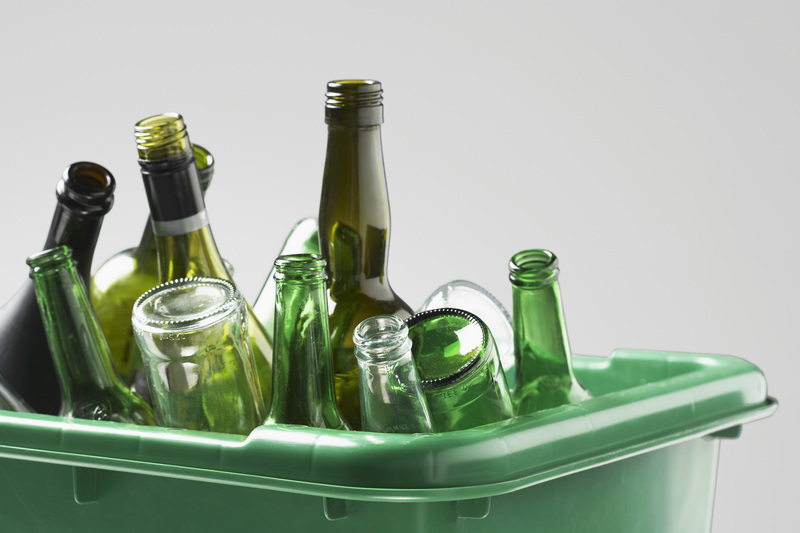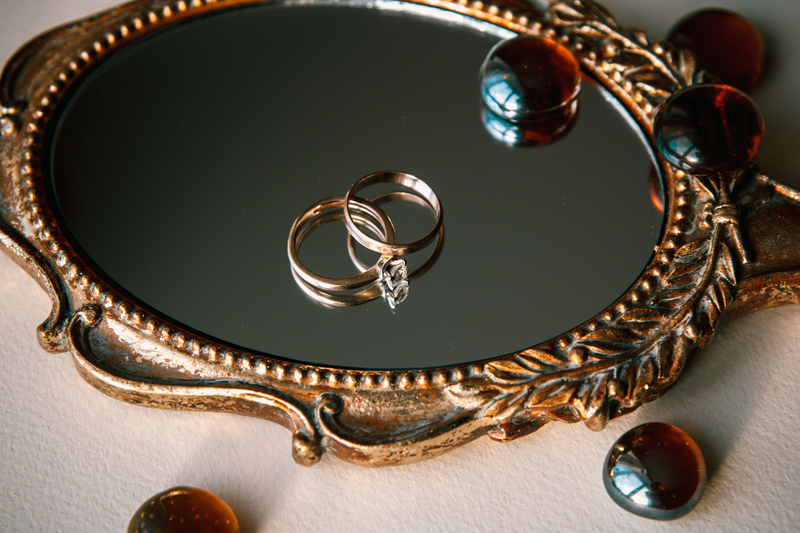Upcycle with Purpose: Transform Discarded Goods into Functional Masterpieces
Upcycling isn't just a trend--it's a purposeful lifestyle choice that combines sustainability, creativity, and resourcefulness. If you're passionate about giving new life to items that would otherwise end up in the landfill, then discovering how to upcycle with purpose can transform your home, mindset, and even your community. In this article, we'll explore how you can turn discarded goods into functional masterpieces, why upcycling matters, and practical tips to inspire your next eco-friendly project.
What Is Upcycling?
Upcycling, also referred to as creative reuse, is the process of transforming waste materials, unwanted items, or by-products into new products of higher quality or value. Unlike recycling, which breaks down materials to create something new, upcycling repurposes existing items, maintaining their original structure as much as possible while enhancing their usefulness and aesthetic appeal. ?
Upcycling vs. Recycling: Understanding the Difference
- Recycling involves breaking down materials (like plastic or glass) and remanufacturing them into new products, which often uses significant energy and resources.
- Upcycling keeps items mostly intact, using creativity and ingenuity to give them a new function or visual appeal, minimizing energy use and environmental impact.

Why Upcycle with Purpose?
There are numerous benefits to intentional upcycling, especially when you focus on creating functional masterpieces rather than mere decorative pieces. Here's why you should start upcycling with purpose:
- Sustainability: Reduce waste by diverting items from landfills and lowering your environmental footprint.
- Creativity: Finding innovative uses for discarded goods fosters creativity and problem-solving skills.
- Functionality: Transforming trash into something useful supports a minimalist lifestyle and reduces the need to buy new items.
- Economic Benefits: Save money by repurposing what you already have instead of purchasing new products.
- Community Engagement: Sharing upcycling ideas and projects can build a culture of resourcefulness and sustainability in your community.
Upcycle with purpose--by prioritizing both function and design, you ensure that your creations are not just beautiful, but truly useful in everyday life.
Getting Started: Upcycling Basics
Step 1: Gather Discarded Goods
Start by collecting discarded items that may have potential for transformation. Look for things such as:
- Old furniture--chairs, tables, dressers
- Pallet wood and crates
- Glass jars and bottles
- Worn textiles--clothes, curtains, sheets
- Outdated electronics
- Cardboard boxes and packaging
- Metal cans or containers
Visit your local thrift store, flea market, or even your own attic or basement. You'll be surprised at how many items are waiting for a second life.
Step 2: Plan Your Functional Masterpiece
Once you have your materials, it's time to brainstorm creative ways to transform them. Ask yourself:
- What functional purpose could this item serve?
- What tools and skills do I need to make this transformation?
- Can the item be combined with others to create something entirely new?
Remember, the goal is to upcycle with intention, so prioritize utility as much as visual appeal.
Step 3: Clean and Prepare Materials
Hygiene and safety are key. Thoroughly clean all items before starting your upcycling project. Sand, paint, or repair where necessary to create a sturdy foundation for your masterpiece.
Step 4: Get Creative!
Now comes the fun part--transforming your discarded goods. Don't be afraid to experiment with different techniques like painting, sewing, cutting, nailing, or gluing. If you need inspiration, search for tutorials, Pinterest boards, or YouTube channels dedicated to purposeful upcycling.
10 Inspiring Upcycling Projects to Try
To help you begin your journey to upcycle with purpose, here are 10 creative ideas for turning discarded goods into practical, functional masterpieces:
-
Vintage Suitcase Shelves:
- Turn old suitcases into wall-mounted shelves by securing them to studs. These add quirky storage and a vintage flair to any room.
-
Wooden Pallet Furniture:
- Transform pallets into coffee tables, sofas, beds, or outdoor benches. Sand and paint for extra durability and style.
-
Glass Jar Chandeliers:
- Repurpose glass jars as pendant lights or candle holders for a rustic lighting solution.
-
Drawer Organizers from Cardboard Boxes:
- Cut and arrange sturdy cardboard into drawer divider boxes for organizing home offices or dressers.
-
Textile Rugs:
- Braid or weave old T-shirts and linens into unique, washable rugs or doormats.
-
Tin Can Planters:
- Paint empty tin cans and use them as herb planters or desk organizers.
-
Dresser to Bench Conversion:
- Remove the top drawers from an old dresser, add a seat cushion, and you have a chic hallway bench with storage.
-
Bottle Cap Art:
- Glue bottle caps to create colorful mosaics or wall art for a playful touch.
-
Book Stack Side Table:
- Securely stack old hardcover books and top them with glass for a quirky literary side table.
-
Upcycled Bike Wheel Clock:
- Attach clock hands and a mechanism to a reclaimed bicycle wheel for a unique, functional timepiece.
Tips for Successful Purposeful Upcycling
Think Function First, Artistry Second
While it's amazing to make things that are visually stunning, aim to create pieces that have a genuine use in your life or home. Ask yourself: will this object serve a daily purpose or solve a problem? That's the true purpose behind meaningful upcycling.
Upgrade Rather Than Downgrade
True upcycling elevates an object's value. Instead of simply reusing an item the same way, consider how you can improve on its original design or functionality. This might mean adding features, enhancing durability, or merging two items for something entirely new.
Prioritize Safety
- Be cautious with tools or materials, especially if upcycling electronics or working with potentially hazardous substances.
- Check for sharp edges, splinters, or toxic chemicals in your chosen items.
- If painting or finishing, use non-toxic paints and sealants, particularly for kitchenware or children's items.
Don't Overwhelm Yourself
Start with small projects that don't require many materials or complicated techniques. As your skills and confidence grow, you can move on to more ambitious functional masterpieces.
Join the Upcycling Community
Upcycling isn't just about what you can make on your own--it's also about sharing ideas, inspiration, and know-how. Join forums, workshops, or social media groups to learn tips, display your work, and draw inspiration from others who strive to upcycle with purpose.
The Environmental and Social Impact of Upcycling
When you practice purposeful upcycling, you're not just making your living space more interesting and functional--you're also making a measurable impact:
-
Reduces Landfill Waste:
- Millions of tons of usable materials are discarded yearly. Upcycling gives these materials a second chance.
-
Conserves Resources:
- Upcycling extends product lifespan, deferring the need for new resources, energy, and water to manufacture replacement items.
-
Cuts Carbon Footprint:
- Creative re-use requires less energy than recycling or manufacturing, directly reducing your environmental impact.
-
Empowers Communities:
- Local upcycling initiatives or workshops can provide job opportunities, vocational training, and foster a sense of community pride.
-
Promotes Mindful Consumption:
- When you upcycle with intention, you become more conscious of what you buy and what you discard--shifting to a more sustainable lifestyle.
Challenges to Upcycling and How to Overcome Them
Lack of Time or Skills
Many people believe they don't have the time or skill for upcycling. Setting aside even just an hour a week to work on a small project can make a big difference. Start with simple projects and look for online tutorials to build confidence.
Finding the Right Materials
If you don't have a stash of items at home, check local online classifieds, swap groups, or community recycling centers. Many people are happy to give away items rather than throw them out.
Limited Space
Transforming clutter into useful items is the essence of upcycling. Make sure your projects fit your space and your needs--avoid creating more clutter in the name of sustainability.
Creative Blocks
Everyone experiences creative ruts. Flip through design magazines, visit upcycling blogs, or talk with fellow enthusiasts to get your creativity flowing again.

Upcycle With Purpose: Making a Movement
Upcycling with purpose goes beyond arts and crafts. It's about fostering a mindset of resourcefulness, responsibility, and innovation. By committing to transform discarded goods into functional masterpieces, you create practical solutions for everyday problems while reducing your environmental footprint.
Imagine a world where every obsolete object has the potential to be useful again--where the line between trash and treasure is blurred by imagination and intention. Your journey can inspire family, friends, and your community to reimagine waste as a resource, steering us all toward a brighter, greener future.
Conclusion: Start Your Upcycling Journey Today
With a commitment to upcycling with purpose, you'll never look at discarded goods the same way. Each piece of "waste" becomes a canvas for sustainability, creativity, and practical problem-solving. Whether you're crafting chic furniture from pallets, turning jars into lighting, or inventing entirely new gadgets--your functional masterpieces will make a statement for both the planet and your personal style.
Start today: Find one item in your home destined for the bin and ask yourself how it might be transformed for practical use. Share your creations, swap ideas, and encourage others to join the purposeful upcycling movement. Together, we can create a culture where nothing is wasted, and everything has a second chance to shine.